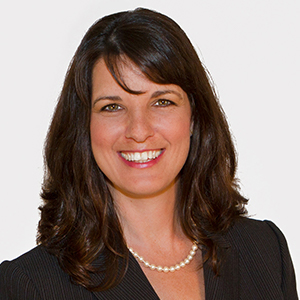In the realm of nonprofit organizations, achieving goals is paramount to success. However, navigating the path to success requires more than just good intentions—it demands strategic planning, meticulous goal setting, and adaptability in the face of challenges. In this article, we delve into the essential components of effective goal achievement for nonprofits, exploring the distinction between goals and objectives, the importance of measurable outcomes, and strategies for course correction when targets are not met. By dissecting the intricacies of nonprofit goal setting and offering actionable insights, we aim to equip organizations with the tools necessary to navigate their journey toward meaningful impact and sustainable growth.
Suppose your organization is not achieving a particular goal. The first question you should ask yourself is if you are measuring the accomplishment of a goal or an objective correctly in the first place.
Analyzing Nonprofit Goals and Objectives
A goal is usually more of a broad, overarching statement of something you want to accomplish, and objectives are typically measurable subsets of that goal. For example, if you want to increase your fundraising income for a particular year, or if your goal is to increase your fundraising income in a given year, you may have some additional objectives that facilitate that goal.
For instance, you may have a measurable objective to increase your major gifts income by a certain percentage by the end of the year, or a goal to increase your income from grants by the end of the year. You may have different objectives, but they all need to be measurable in terms of time, income, or percentage. If you are going to measure and define an increase, you want to identify how much of an increase meets the objective and within what amount of time. A goal, rather than an objective, is more generalized and overarching and is typically what you would share with your supporters or the general public. Objectives are a system of measurement that provides you with information you need to determine your progress in achieving that goal.
Establishing Benchmarks
Each objective can also be divided up into benchmarks, which give you smaller chunks of time or volume. If you have an objective to increase the income that you receive from grants by $100,000 within three years, then you may want to create some benchmarks that, within year one, you will increase it by $30,000, and in year two, another $30,000 and in year three 40,000 to get to that $100,000 mark. Incrementally defining your goals using measurable objectives and benchmarks enables you to identify where you are achieving your goals and where you are falling short.
Identifying Reasons for Shortcomings
The question then becomes, why are you falling short? For instance, has anything changed in your environment? Is that change internal within your organization, or is it external, something that you don’t have any control over but is impacting you? Is that change in your environment permanent or temporary? Internally, you might have lost a key position, which is impacting your ability to achieve your goals. In the case of fundraising, maybe you lost your development director. Is that a permanent loss, or is that a temporary loss?
Implementing Strategic Course Corrections
Uncovering the flaws in your strategy might be the key to understanding why you haven’t met your goals. Recognize this, and you open the door to transformative actions. Reflect deeply on the root causes—was your goal unrealistically ambitious, or have circumstances changed in ways you didn’t foresee? Once you pinpoint the reasons, the path forward becomes clearer and you can determine where you might have strayed off course. You have the power to recalibrate your ambitions or overhaul your strategies by concentrating on the destination. Don’t be afraid to implement new objectives by reaching out to the rest of your team to get their feedback on what is working and what is not. Perhaps the worst decision that can be made is to do nothing when a goal doesn’t seem to be getting any closer. After all, this isn’t just about making adjustments; it’s about reshaping your approach to turn your organization’s aspirations into achievements.
Managing Public Perception
So how do you maintain a positive image in the public eye despite setbacks? If you were measuring progress on the achievement of strategic goals, you’d hopefully know early on that you’re not making progress, and you don’t really need to worry about saving face too much. If you’re using benchmarks, then you probably know early on, and you can course correct before it becomes a big issue with your supporters or the general public.
However, if you are not making those incremental measurements and you don’t realize it until it’s too late and your supporters are going to know about this, there are some things that you can do. First, be certain you promote the accomplishments that were realized and celebrate those. You can share your barriers to achieving success with your leaders and ask for their help in removing them. You can share your challenges with supporters and let them know how they can help, and then you can also share the next steps with all your stakeholders and let them know how you plan to proceed.
Embracing Learning and Innovation
Remember, from failures, you learn, you adapt, and you refine how you do things. It is so important that you’re not afraid to innovate. Go out there, innovate, and do the very best that you can with the resources they have, but definitely try new things and measure, measure, measure! Use data to help you understand whether or not you’re making the progress you hoped for. Keep dreaming big and work every day to make those dreams happen.





